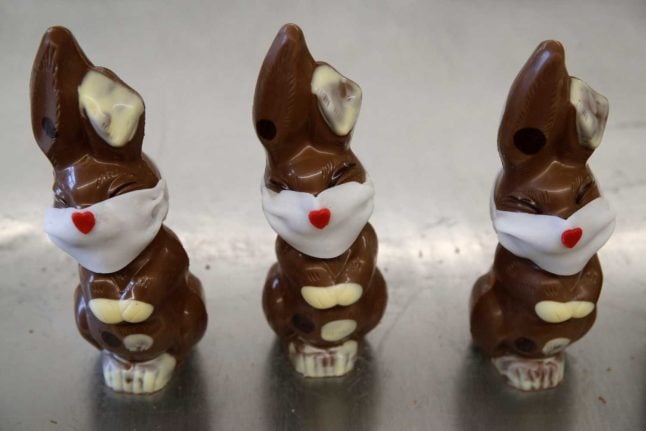Gérard Fornerod created the speciality chocolate in collaboration with the Eurolactis society, also based in Morges, which produces cosmetics and other products using donkey’s milk.
In 2014 Pierluigi Orunesu, founder of Eurolactis, hit the news when he travelled to the Vatican to present his products to Pope Francis, who revealed that he was fed donkey’s milk as a child growing up in Argentina.
“When he returned Pierluigi suggested that I make recipes with his product. I started to make pastries and the result was really good,” Fornerod told Le Tribune de Genève on Sunday.
Wanting to create a product with a longer shelf life, Fornerod soon developed a donkey’s milk chocolate which is the first such product in Switzerland.
Donkey’s milk is said to be the closest animal milk to human breast milk. Rich in lactose and fatty acids and lower in fat than other milks, it is thought to boost the immune system and may be suitable for those who are allergic to cow’s milk.
The ancient Greeks and Egyptians considered it an elixir, and Cleopatra famously bathed in the stuff.
In 2013 the UN Food and Agriculture Organization said donkey’s milk has “particular nutritional benefits” since its proteins may make them more suitable for people who are allergic to cows’ milk.
Speaking to The Local on Monday, Orunesu said he set up Eurolactis since there was plenty of demand for donkey’s milk products but very little on the market.
“It’s the closest milk to mother’s milk. And that’s very good for all problems relating to allergies and for nutrition,” he said.
The new donkey’s milk chocolate is a first in Switzerland, since all chocolate here is made from cow’s milk, he said.
“So it’s a way of innovating, and above all it brings a lightness to the chocolate that cow’s milk does not have,” he added.
Orunesu is confident there is a market for donkey’s milk chocolate, particularly among those who are allergic to cow’s milk.
“Not only in Switzerland. In the modern world between four and five percent have allergies and that’s on the rise.”
However there aren’t actually many donkey’s milk producers in Switzerland. Though Eurolactis was created in Switzerland, most of the milk comes from Italy, he said.



 Please whitelist us to continue reading.
Please whitelist us to continue reading.
Member comments